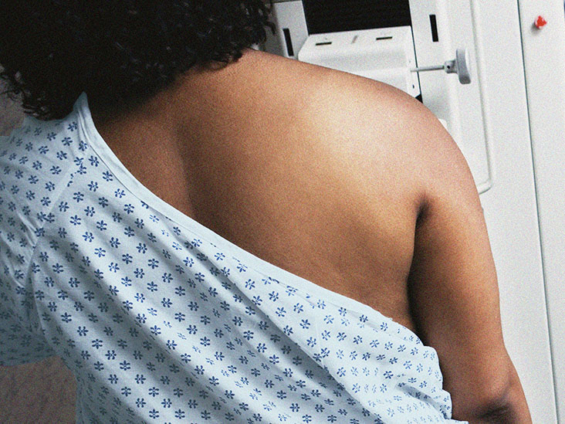Apart from being aesthetically pleasing to the eyes and arguably the most attractive part of the body of a female and somewhat a marker of feminity, the breast may have diseases.
However, it is, if not the most commonly pain-stricken part of a female’s body. Breast pain (mastalgia) is one of the most common symptoms in the life of a female although it may be present in males as well. Not all breast pain is accompanied by something sinister like breast cancer.
Breast pain sometimes presents as a source of worry, anxiety and a state of turmoil in the hearts and minds of sufferers. Some periodical and others not. “hmm doctor, I have this unusual feeling in my breast. Do I have breast cancer?”.
This question and many more will be tackled in today’s article. Come along with me as we delve into some of the common underlying causes of breast pain that any female may experience throughout her life.
Pain and lump in a young breast.
It is not uncommon to have young female citizens experiencing breast pain and/or lump during menstruation. Some females say it is a dragging feeling, not necessary pain.
The two most common diseases in the young breast are fibroadenoma and fibrocystic changes. The latter often presents a lumpy breast with cyclical mastalgia that is a breast pain that erupts and subsides chronologically with menstruation. This should not be a reason for your worry.
A type of persistent breast pain out of phase with menses should stunningly raise eyebrows. Such pain should be reported to a medical professional.
Normally caused by coffee and drugs (oral contraceptives). These can be the reasons for the pain. Fibroadenoma is this type of breast lump that perambulates on the attempt of being caught. It is popularly called the breast mouse because of its ability to move constantly. It may be in one or both breasts. A breast lump insistently present after 1-2 months must be examined by an expert hand.
This is why a weekly breast exam in a well-lit room with a mirror is imperative so that slight and unusual changes will be discernible quicker for better treatment and outcome. Mind you, young people do get breast cancer. The youngest person to get breast cancer was a 10-year-old.
Breastfeeding and breast pain.
Pregnancy, delivery and postpartum (after delivery) periods present with a lot of issues once in a while. From depression to chronic tiredness with daytime sleepiness to loss of body contours and confidence. Breast pain in lactating females is very common. This is called lactational mastitis. Intense breast pain and redness, with a fever with or without a breast lump accompanied with the normal unstained milky fluid for the newborn are its hallmarks.
It is normally due to a blockage of the milky ducts draining towards your nipple due to a bite from your enthusiastic baby. It is commoner with breastfeeding mothers having infants during teething.
Home remedies to manage this is by soothing compressions with a warm towel and purposive visit to the health facility or speak to your healthcare provider. It is not a red light to stop breastfeeding. Due to the pain breastfeeding mothers shun breastfeeding. Authorities encourage continual breastfeeding so that you don’t end up starving your baby.
Breast pain following breast trauma
Just like all parts of our body that becomes sore when hit by a force, the breast is no exception. Apart from pain trauma to the breast can result in a breast lump. A lump is sometimes as hard as a stone. You may mistake that for cancer. If the pain and lump are not responding to pain killers for more than 2 days, my dear reader is probably time to see the medical practitioner.
An inappropriately sized bra can cause pain
An inaccurately fitted bra might cause breast soreness. A bra that is too tight or too loose compresses the breasts or provides insufficient support, causing discomfort. Ask yourself these questions to know if you have the appropriate brassiere.
- Is the bra riding up at the back?
2. Is the centre close to your breastbone (the hard central bone extending from the base of the neck to the upper part of your abdomen), and can you comfortably slip your finger beneath the band below the cups?
3. Are your bra straps or underwire biting into your skin, or are your breasts protruding?
****
The writer is a final year medical student at the University of Development Studies and can be reached at (@_papabiney on Twitter & Instagram) and mikebiney77@gmail.com
Latest Stories
-
Bawumia joins thousands in Kumasi for burial prayers for Ashanti Regional Imam
4 seconds -
Blue Gold Bogoso Prestea Limited challenges government actions in court
27 minutes -
Patrick Atangana Fouda: ‘A hero of the fight against HIV leaves us’
1 hour -
Trinity Oil MD Gabriel Kumi elected Board Chairman of Chamber of Oil Marketing Companies
2 hours -
ORAL campaign key to NDC’s election victory – North America Dema Naa
2 hours -
US Supreme Court to hear TikTok challenge to potential ban
2 hours -
Amazon faces US strike threat ahead of Christmas
3 hours -
Jaguar Land Rover electric car whistleblower sacked
3 hours -
US makes third interest rate cut despite inflation risk
3 hours -
Fish processors call for intervention against illegal trawling activities
3 hours -
Ghana will take time to recover – Akorfa Edjeani
4 hours -
Boakye Agyarko urges reforms to revitalise NPP after election defeat
4 hours -
Finance Minister skips mini-budget presentation for third time
4 hours -
‘ORAL’ team to work gratis – Ablakwa
4 hours -
Affirmative Action Coalition condemns lack of gender quotas in Transition, anti-corruption teams
4 hours

